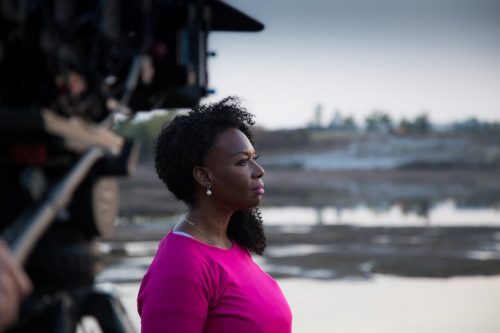By Chris Byrd | Catholic News Service
NEW YORK (CNS) — As the United States grapples with renewed demands for racial equity, the nation also is marking the centennial of one of the most shameful episodes in its history, the Tulsa Race Massacre.
Thus a documentary recounting that event could hardly be timelier.
Yet, though well-intentioned, Jonathan Silvers’ film “Tulsa: The Fire and the Forgotten” turns out to be something of a disappointment. The unremarkable program premieres on PBS Monday, May 31, 9-10:30 p.m. EDT. Air times may vary, though, so viewers should consult local listings.
Veteran NPR host Michel Martin narrates the show, which opens on the lonely, one-man protest of the Rev. Robert Turner of Vernon AME Church. Every Wednesday, Turner stands outside Tulsa’s city hall and, using a bullhorn, calls for justice for the descendants of people who lost their lives during the disastrous upheaval.
Ground zero for the tumult was Tulsa’s Greenwood neighborhood. So economically successful in the early decades of the 20th century that it was dubbed the “Black Wall Street,” Greenwood was, in the words of Silvers’ narrative, “a beacon of … prosperity” for African Americans. Or so, at least, things stood on the morning of Memorial Day 1921.

Local activist Kristi Williams describes the events that led to Greenwood’s swift destruction. After an encounter of some kind on a downtown elevator, its youthful white operator accused the slightly older Black man who had been her passenger of rape. A rabble gathered the next day, intent on lynching the teenage defendant who was, by then, in custody.
The sight of armed Black men equally determined to protect the prisoner inflamed the white mob who proceeded to go on a rampage. Their burning and looting of the previously thriving Greenwood community ultimately displaced an estimated 10,000 residents.
It’s uncertain how many souls perished due to this mayhem. But as many as 300 people may have died in the course of the 16-hour riot.
Testifying May 19 before Congress, 107-year-old eyewitness Viola Fletcher summed up the enduring legacy of such traumatic violence: “I still see Black men being shot, Black bodies lying in the street. I still smell smoke and see fire. I have lived through the massacre every day,” she declared.
Free of any objectionable content, the movie is nonetheless unsuitable for kids. Despite its aesthetic defects, however, its educational value makes “Tulsa” appropriate for adolescents as well as grown-ups.
Given the dramatic nature of the story it has to tell, the film doesn’t engage viewers to the degree it should. Archival accounts similar to Fletcher’s, recorded in 1999, do make an impact. Yet because these memories are not matched by the kind of striking images that would really drive them home, their effect is blunted.
A lack of sustained focus also hurts the program. More attention, for instance, should have been paid to the effort to secure reparations. Too much time, by contrast, is devoted to attempts to revive Greenwood, a laudable goal whose pursuit, however, does not make for gripping television.
Forensic work to ascertain whether massacre victims were buried in unmarked graves proves more interesting. One figure who emerges in a positive light in connection with that endeavor is Tulsa’s Catholic mayor, G.T. Bynum. “It’s never too late to do the right thing,” the moderate Republican, a graduate of Pennsylvania’s Villanova University, observes.
Yet here again, the film ends before this intriguing topic is fully developed. Diffuse and lacking a clear message, the documentary fails to seize its propitious moment.
Byrd is a guest reviewer for Catholic News Service.






















